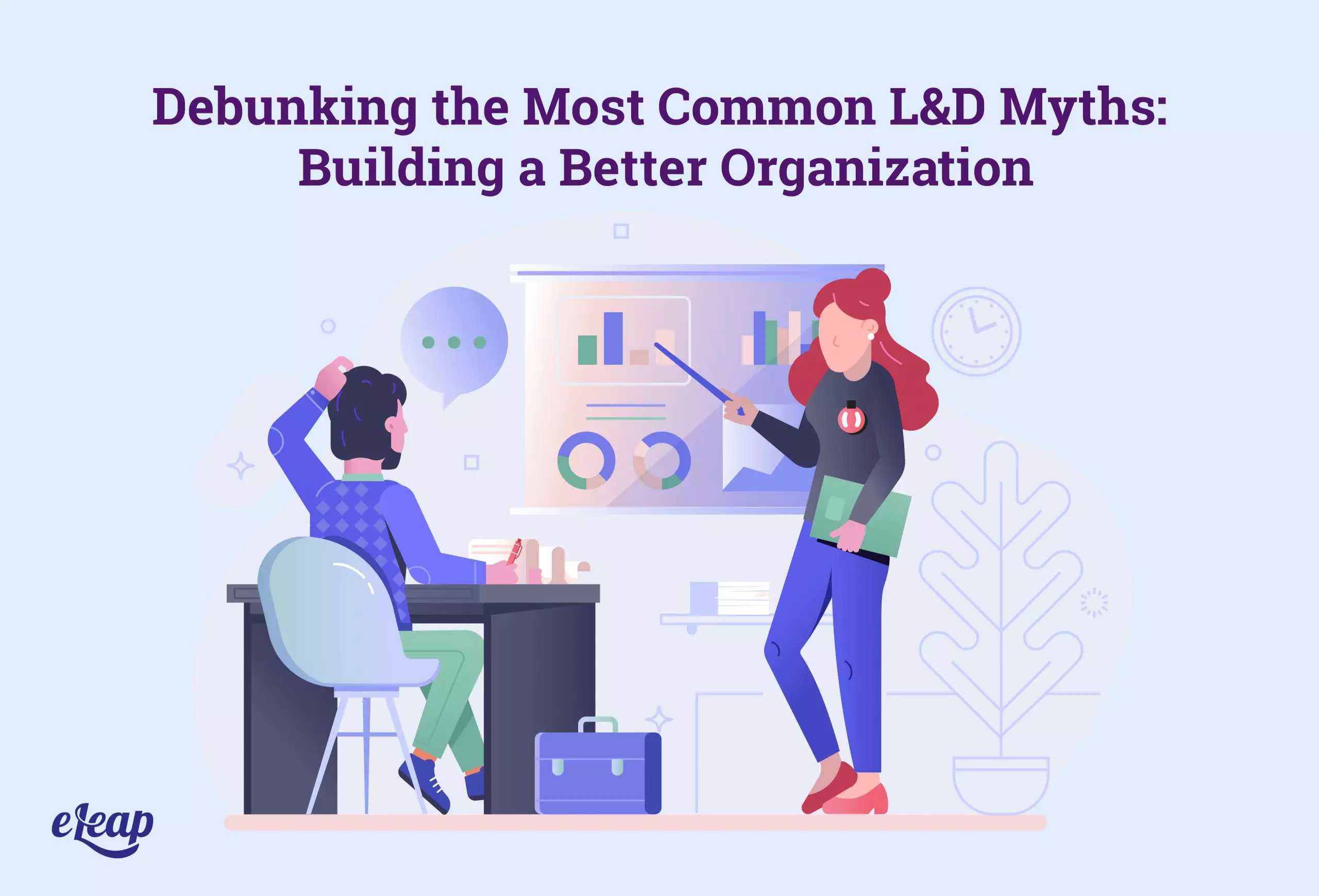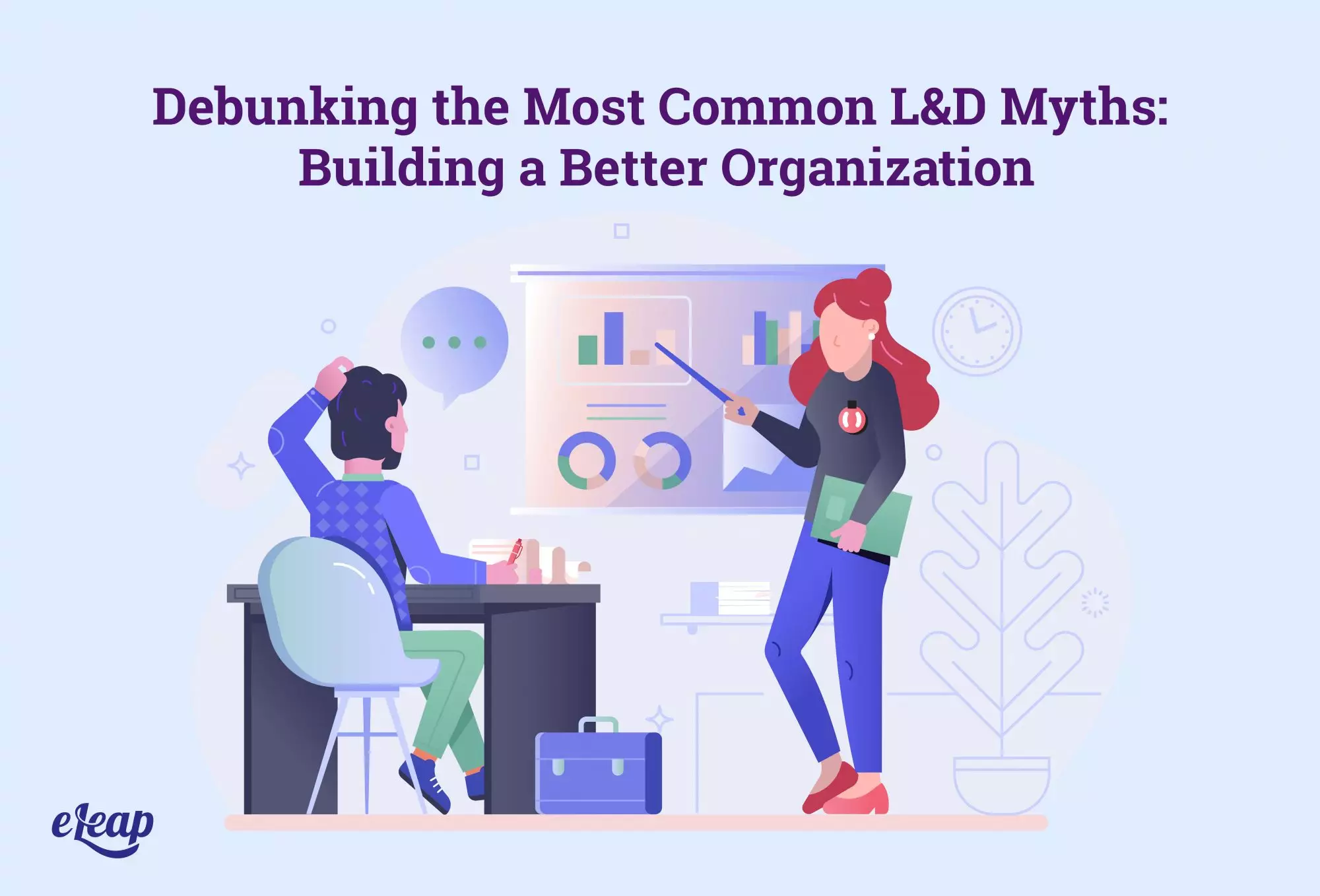Debunking the Most Common L&D Myths: Building a Better Organization

In the corporate world, learning and development often take a backseat to performance management. Ostensibly, that’s because managing performance has a more immediate impact on success than L&D, which is untrue. That’s not the only myth that might be crippling you with building a better organization with the ability to grow and thrive, either.
In fact, quite a few myths about corporate L&D abound, followed unquestioningly because they’re promoted by those in authority. In this post, we’re going to debunk some of the most damaging myths about learning and development to help shed light on the fact that L&D and performance management are two sides of the same coin.

Everyone Has a Specific Learning Style
It’s easy to understand how this one got started because, like many myths, there’s a kernel of truth to it. Yes, everyone does have a particular learning style that they’re more attuned to, and that might require less effort, at least initially. The truth of the matter is that everyone can learn in multiple ways. What comes most naturally might not be the best option, either.
For instance, game-based learning can deliver powerful results, but older employees are often resistant. That’s not because they cannot learn through gameplay but because they’re uncomfortable with the platform, challenged by something new, and may feel inadequate in the situation. A compassionate approach here would be to walk older learners into the process gently, help them learn the ropes without the need to criticize themselves (usually unconsciously), and then move forward at a faster pace toward building a better organization.
Learning and Development Doesn’t Offer an Immediate Return on Investment
Like our first myth, the origins of this one are easy to see, particularly when taken in context with mandatory corporate training. Many in the C-suite don’t feel that things like diversity training, cultural sensitivity training, and similar courses required to meet government or industry-mandated rules offer much in the way of ROI. The truth, of course, is very different.
Learning and development offer many forms of return on investment. Seeing them is simply a matter of changing perspective. Too often, the view of limited ROI is held by those who are only looking at a single metric – financial return. If you’re looking at L&D initiatives and wondering how much money they will make the company in the next quarter, you’re going to be disappointed. That’s not because there is no financial return but because the return is tied to a myriad of other factors that might not seem like they’re even remotely related to the training in question.
For instance, how much value do you place on employee engagement? Obviously, you understand that deeply engaged employees are dramatically more productive than their disengaged counterparts. They’re also more likely to stay with the company for much longer durations, reducing churn, onboarding and training costs, and more.
So, what price tag would you put on “engagement”? What ROI would you assign? Does your C-suite even realize that L&D can dramatically increase engagement across the entire organization?
That’s the kind of challenge you face when tracking financial ROI and tying it to L&D initiatives. There’s an immense return to be seen. It just requires looking from a different perspective.
The Best LMS Will Ensure Learning Success
This myth is related to the “if you build it, they will come” idea. It’s not remotely true, but so many decision-makers chase technology first without giving any thought to the culture they’re building within their company. Yes, the right learning management system can make a dramatic difference in many areas, including:
- Enabling anytime, anywhere learning through mobile technology
- Creating better learner engagement through interactivity
- Making it simpler to track training and create customized learning paths
However, no matter how slick your LMS or how interactive your content is, that doesn’t overcome a culture that denigrates learning and puts it in the backseat. If your company’s executives don’t embrace the need for and value of ongoing learning and development, then why should your employees bother?
In the end, an LMS is just another tool. If your people don’t use it, or, worse, don’t see the need for the tool in the first place, it’s not going to do any good. Instead of focusing on technology and infrastructure alone, you must take a two-pronged approach.
Find and implement a modern LMS. Fill it with interactive, high-quality content. But, at the same time, change your company culture. Make sure that your employees understand the need for training and that they value personal and professional development. Make it matter to them. Without that, nothing else really matters.
Instructor-Led Learning Is Essential for Developing Soft Skills
We’ve become accustomed to learning hard skills through remote classes, but many of us draw the line at soft skills. These include things like communication, empathy, and more. Traditionally, they’re in the realm of instructor-led learning or ILT. The truth is that this isn’t true, particularly with access to today’s technology.
It has become simpler than ever to create content that helps students build strong soft skills through a very wide range of means. For instance, digital mentorship options help connect people without any need for in-person interaction. A corporate MOOC, gamified training content, interactive lessons that explore potential real-world scenarios, and self-directed experiences can all help build soft skills and enable success.
Generic Learning Is Fine
This myth is all about being “good enough.” The truth is that generic content is just that – generic. It’s not engaging. It’s not thought-provoking. It’s not even enjoyable in most instances.
While it might be fine for mandatory corporate training that can be applied to everyone in the organization, it’s certainly not the right approach to career progression training or continuing education (CE). Customized, personalized learning is the answer. It offers deep engagement, speaks directly to the individual learner, and clearly communicates the value of and need for training in their personal and professional life.
Building Your Training
As you can see, there are lots of myths out there about learning and development, but when you understand the reality, it becomes easier to create training initiatives that support success.